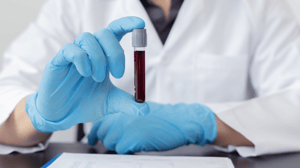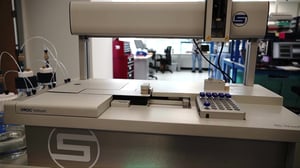
Blood Serum Viscosity: microVISC PRO Viscometer Measurement Guide
Choosing the Right Blood Serum Viscometer for Clinical Labs
Introduction
Blood serum is obtained by centrifuging fresh blood, without addition of anticoagulants, until the blood cells precipitate. Blood serum viscosity can be a valuable complementary diagnosis and monitoring tool for blood-related conditions such as hyperviscosity syndrome, or other conditions which alter the types and concentrations of proteins in the serum.
Traditional methods to measure blood serum viscosity (i.e., capillary viscometers, rotational viscometers) present challenges, including…
- Low throughput.
- Requiring high sample volumes.
- Providing inaccurate and slow temperature control.
- Data quality depends on operator experience.
- Cleaning is required between samples.
- A capillary viscometer only provides kinematic viscosity. A density reading is needed to convert to dynamic viscosity, which adds an extra step and potential source of error.
RheoSense microVISC PRO overcomes the challenges as a portable and easy-to-use microfluidic viscometer with built-in Viscometer-Rheometer-on-a-Chip (VROC) technology and Peltier temperature control.
Materials and Methods
A pooled human blood serum was acquired from Innovative Research (Lot 54242). About 300 µL of serum was aspirated to a disposable custom pipette and the viscosity was measured at 37°C with the microVISC PRO equipped with the A05 chip. This process was repeated 10 times without cleaning between samples to demonstrate the high repeatability of the continual sample testing. The viscosity of cleaning solvent, PBS buffer with 1% Aquet, was measured prior to and post sample testing to gauge any change in accuracy. In addition, MGVS100 (Lot 1241912) was run at the beginning of the workflow to ensure the chip was calibrated well.
Results and Conclusions
In the plot, each viscosity data point corresponds to one of the 10 measured samples and is an average of up to 8 repeats (data with R2 < 0.9999 and from first two repeats was discarded), while the tiny error bars correspond to the standard deviation. All samples were measured at the same shear rate of 8,000 1/s (450 µL/min). The viscosity of all the samples is ~ 1.1 cP, while the repeatability is ~ 1 %RSD. For serum viscosity, a %RSD < 5 is sufficiently precise for the diagnosis and monitoring of hyperviscosity syndrome. These results demonstrate the high repeatability of the continual sample testing. The viscosity of cleaning solvent, PBS buffer with 1% Aquet, measured prior to and post sample testing was unchanged, highlighting the effectiveness of this cleaning solvent and the high accuracy of the VROC chip.






.jpeg?width=300&name=Woman%20scientist%2c%20documents%20and%20hands%20writing%20_575258496-min(1).jpeg)
